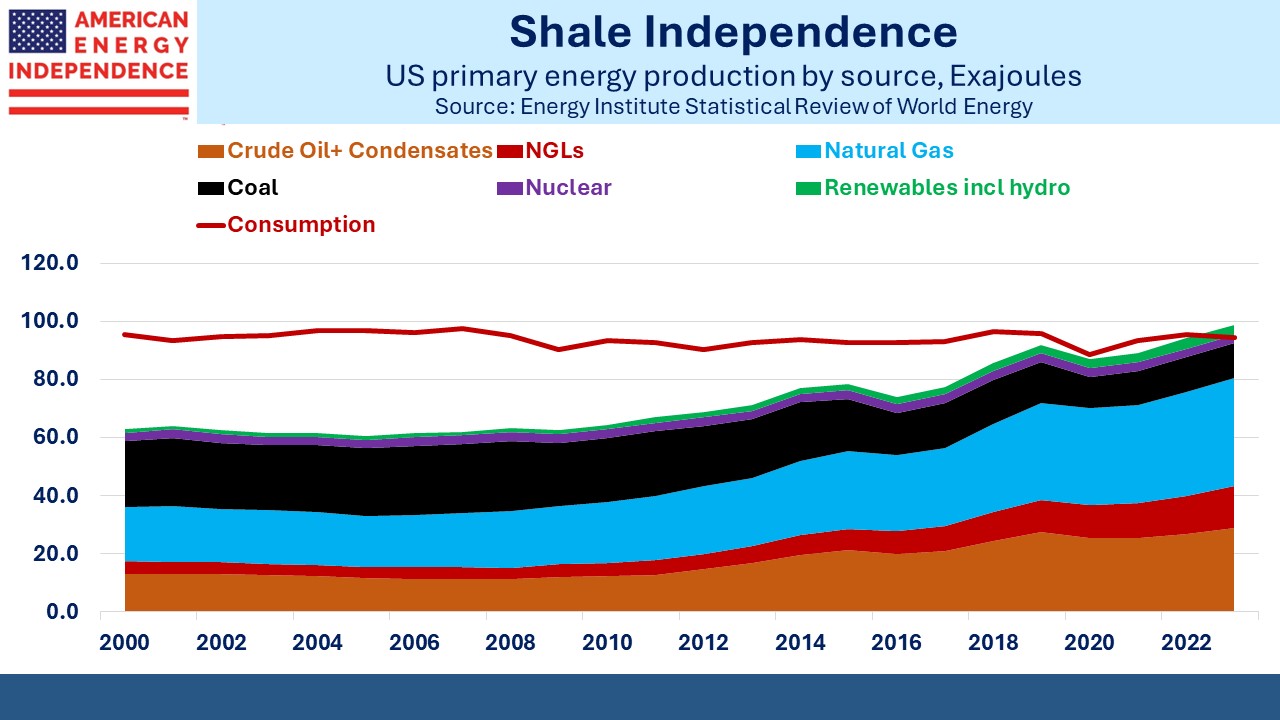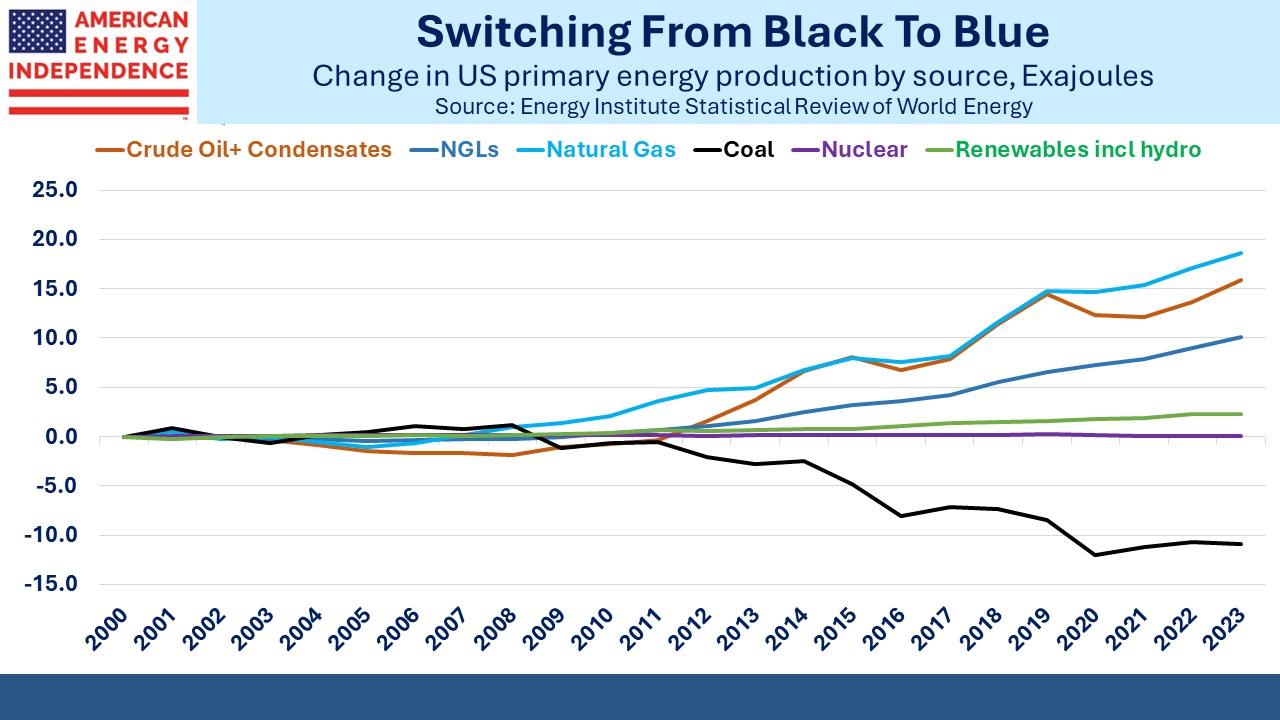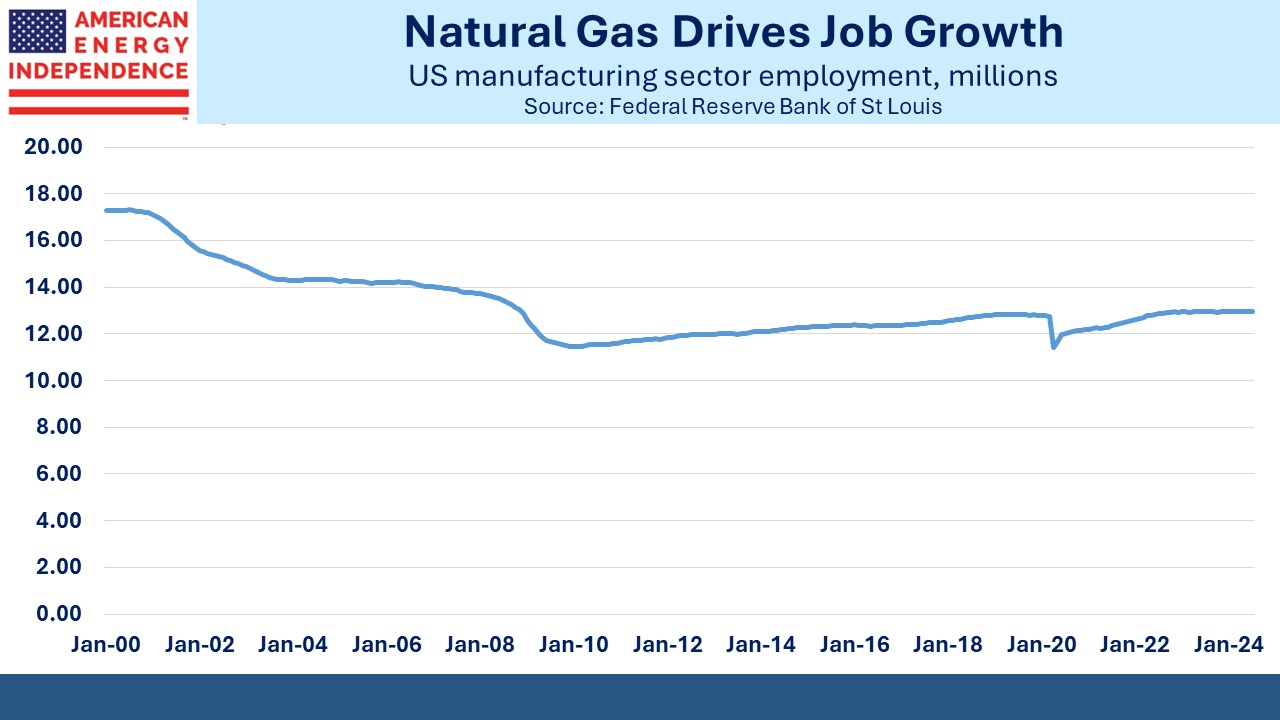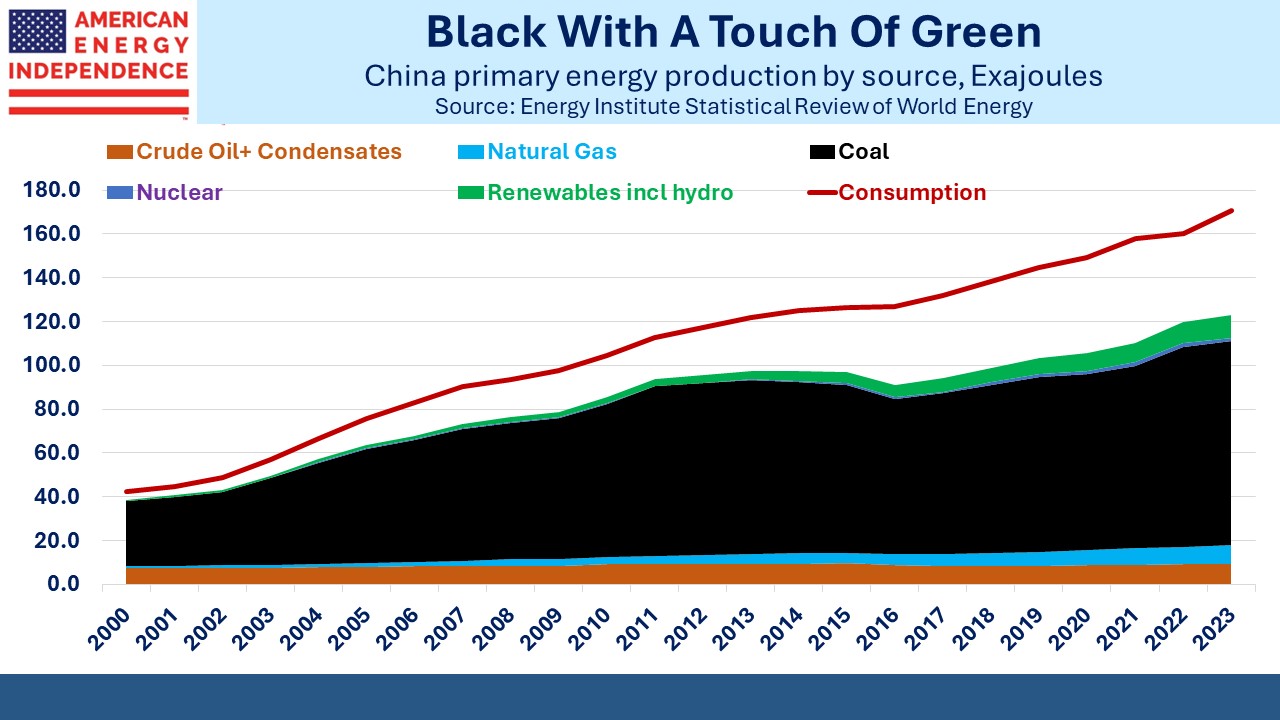Renewables Are An Energy Footnote
Journalists love to write about fast growing renewables. It fits the narrative that solar and wind can eventually replace our traditional sources of energy. It allows the absence of any serious push towards nuclear power to go unanswered. It avoids the uncomfortable question of why China’s increasing emissions from coal are acceptable when in America California is a decade away from banning sales of gasoline-powered cars and NY forbids natural gas hook-ups to new buildings.
The Energy Institute’s 2024 Statistical Review of World Energy is a rich source of data on how the world obtains and uses energy. Careful analysis allows many energy shibboleths to be put to bed.
Start with America. The biggest energy story of the past decade is the growth in oil and gas output, which has in turn enabled a drop in coal. The shale revolution delivered mixed results to investors because at times executives were overly enthusiastic about the returns they could earn. But there’s no doubt that it was good for the US economy.
Since 2013 our total output of primary energy has grown at 3.3% pa, by 27.7 Exajoules (EJs). 49% of that increase came from natural gas, and 44% from crude oil and condensates. Together they provided 93% of increased production.
The typical liberal journalist hails the 6.3% pa growth in output from all renewables including hydro. It sounds impressive. But starting from a low base it’s an additional 1.6 EJs. Increased output of natural gas alone was 8X as much, supporting energy security, job growth and exports to our friends and allies. There should be 8X as much news coverage of this enormous success.
Few casual readers of energy news would be likely to guess anywhere near this 8X ratio if asked.
It’s fortunate that natural gas grew this much, because coal production fell at a 5.1% pa rate, or by 8.2EJs. This is 5X the increase in renewables. By reducing coal burned in power plants we have lowered our CO2 emissions along with other harmful pollution. Renewables were barely relevant to this success story. It was mainly achieved with natural gas.
Along the way we reached energy independence. In the popular imagination this refers narrowly to crude oil, when exports exceed imports. A broader measure compares energy production with consumption. America’s use of energy is flat over the past couple of decades.
Our economy and population have grown, but we’ve become more energy efficient. Activity has also shifted to less energy-intense sectors – more services and less industrial output – although cheap natural gas has caused a resurgence in US manufacturing employment following decades of decline.
The bottom line is that renewables provide 3.5% of our primary energy output, up from 2.7% a decade ago.
Turning to China, they recently reported hitting their renewables power target six years ahead of schedule. To the casual observer of energy news, it appears that the world is moving in lockstep to solar and wind. Some even worry that America is at risk of falling behind China’s ambitions on climate change.
Then there’s the facts.
China’s energy consumption has quadrupled this century, as the country began to make up for decades of socialist central planning. The biggest energy story in China is the yawning gap between energy production and consumption. China has a substantial energy deficit, at 48 EJs equal to approximately half of all US energy production.
It is a national security imperative for China to close this gap. It complicates any potential military steps against Taiwan. China’s growing EV market and renewables capacity must be seen in this light. They want to reduce their dependence on foreign oil.
China obtains 8.5% of its primary energy from renewables (10.4 EJs), substantially more than the US. It’s grown at 10.1% pa over the past decade. However, this is only 6.1% of China’s energy consumption since they have such a big deficit.
What the cheerleaders for China’s renewables ambitions overlook is that coal production has increased by 13.8 EJs over the past decade, over 2X the 6.5 EJs growth in renewables. Coal provides more than half of China’s primary energy. It’s down from 65% a decade ago, but only because their energy demand has risen faster than their ability to meet it domestically. Coal is13% of US primary energy production.
Energy reporting generally overstates the impact of renewables. It missed the enormous impact of increased US natural gas production. It gives China a free pass on their growing use of coal. It’s clearer when you look at the numbers. Many journalists overstate the impact of renewables and their ability to meet our energy needs. Natural gas is the world’s favorite energy.
We have three have funds that seek to profit from this environment:



